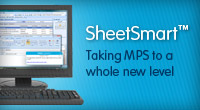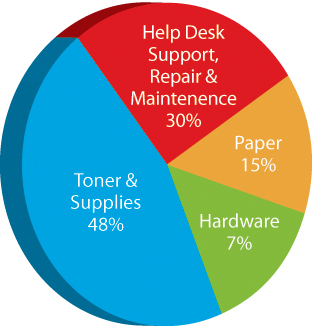

 |
Understanding the Total Cost of OwnershipPurchasing your new print devices would be simple if the purchase price of the device itself were the only cost, or even the largest cost of the overall Total Cost of Ownership (TCO). We will help you understand how to make the right choice when purchasing new devices for your organization. First, let’s walk through what we mean by the TCO.
To assess a printer’s TCO, you will need to combine:
While buying the lowest price printer at first may seem like a bargain, often those devices are designed for low volume printing, therefore having consumables that are not high-capacity or efficient. If you print more on that device than is intended, your overall costs may exponentially increase. Let's take a look at two different printers. Printer A has a street price of $200 and Printer B has a street price of $500. At first glance, it appears that Printer A is a great deal. What you may not know is that, once you calculate the price of the replacement toners and their yield, Printer A has an average cost per page of $.05, and Printer B has an average cost per page of $.02. With only 1,000 pages printed per month, Printer B would be significantly less expensive over the three-year life of the device:
In addition, printers that are not the right fit are more likely to need more frequent maintenance, leading to increased down time and a shortened life cycle. All of this adds up to decreased productivity and increased costs for your organization! Hidden CostsIn addition to the hard costs associated with the purchase of the printer and consumables, there are additional hidden costs which are often difficult to quantify, but are significant when considering the TCO. Some of these costs are:
What about Copiers?While copiers can potentially have a lower cost per page on consumables (toner, etc) than standard printer based devices, once you factor in the entire cost of the device, the overall cost per page is often higher than the overall cost per page of printer-based devices. In addition, today’s business environment leads to the majority of documents being printed, not copied, and the productivity loss of getting up to travel to the copier for the one or two page documents leads to a more significant loss in production, thereby leading to a gradual build-up of personal desktop printers after a copier is installed. Often these are printers that may be listed in the “other” column of a departments expenses so they remain under the radar, however as we have seen, the resulting TCO goes up considerably. If workgroup multi-function devices, based on the correct usage and duty cycle expectations, had been purchased that overall cost would have been contained. |
|||||||||||||||||||||


